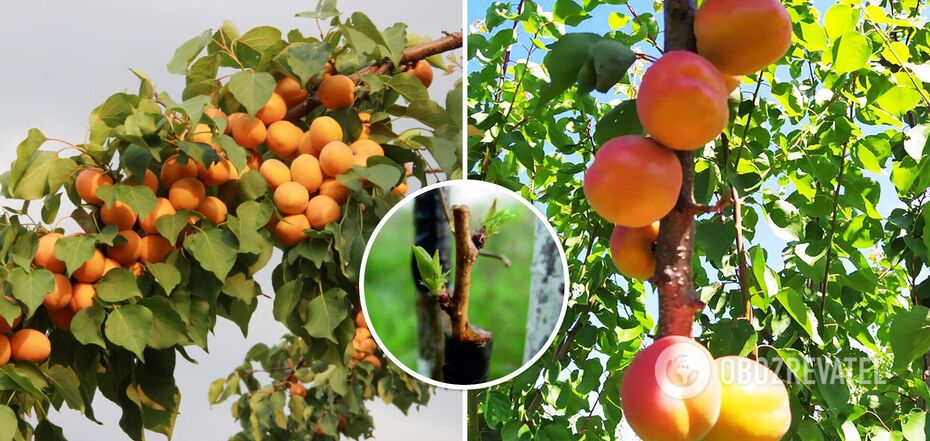Life
How to graft apricot in summer: why it is necessary and which plant to choose
Grafting is a vegetative method of propagation that increases the yield and hardiness of heat-loving trees. Apricots are quite capricious and often die in adverse weather conditions, so traditionally the procedure is carried out in the fall, spring or summer.
Experienced gardeners are sure that the best period for grafting will be the end of July and early August. To know how to properly graft apricot and what plant to choose, read in OBOZREVATEL material.
Why graft apricot
There are five main reasons to do apricot grafting:
- The procedure will help to accelerate the timing of fruiting.
- Endurance of the culture to climatic conditions is increasing, namely frosts or cold winds.
- Grafting reduces the risk of disease development.
- Cross-pollination will help to get a larger harvest.
- You can grow several varieties of the same culture, which will differ in fruiting time and taste.
Why graft apricots in August
August grafting is especially useful, because the tree will have time to gain strength and get the necessary nutrients before winter.
The cuttings are instantly grafted, so there is no need to store them over the winter.
In most cases, August grafting is a success, but if it fails the first time, gardeners will have time to make another attempt.
Which tree to choose
Wild or cultivated apricot
Wild or cultivated apricots will give the best results after grafting. This will not only increase resistance to unfavorable weather conditions, but will also protect the tree from disease and pests. Wild apricots do not produce rootstock.
Wild plum
The risk of rejection when combining apricot with wild cherry is quite low. It is ideal for soils that have a high pH level. Grafting apricot to a hardy wild plum will allow it to withstand spring temperature fluctuations.
Peach
Peach will give an incredibly tasty harvest of sweet and juicy fruits, but climatic conditions should be taken into account. In cold regions, trees may not take root.
Cherry
Cherry will significantly increase the endurance to cold weather, with the fruit harvest in a few year. However, there are disadvantages. The tree may not be able to withstand the load and break. As an option, gardeners advise to buy supports or mix grafts: first graft a plum to the cherry, and then to the apricot.
The basic rules of summer grafting
For thte graft you need to choose a strong branch with leaves. You should also prepare:
- sharp secateurs or a knife;
- graft seal;
- duct tape.
- Cut off the top bud on the apricot. The damaged place should be immediately treated with garden varnish to reduce the likelihood of pests and infection.
- To reduce the consumption of useful substances and accelerate the process of splicing, remove all the leaves from the branch, but be sure to leave the stems on it.
- Make a horizontal cut on the apricot with a sharp knife or secateurs. Treat it with water or a preparation to accelerate splicing.
- Cut the tip off the draft and shape it into a wedge. It should be level.
- Insert the draft into the apricot as deep as possible.
- Wrap the place with duct tape.
How to know if it didn't take roots
Wait a few weeks after grafting. If the branch begins to darken and wither, the draft has not taken root. Disinfect the apricot and repeat the procedure.
Earlier OBOZREVATEL told how to grow beautiful thuja.
Subscribe to the channels OBOZREVATEL in Telegram , Viber and Threads to be aware of the latest events.



























